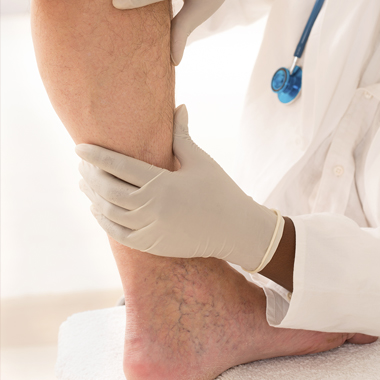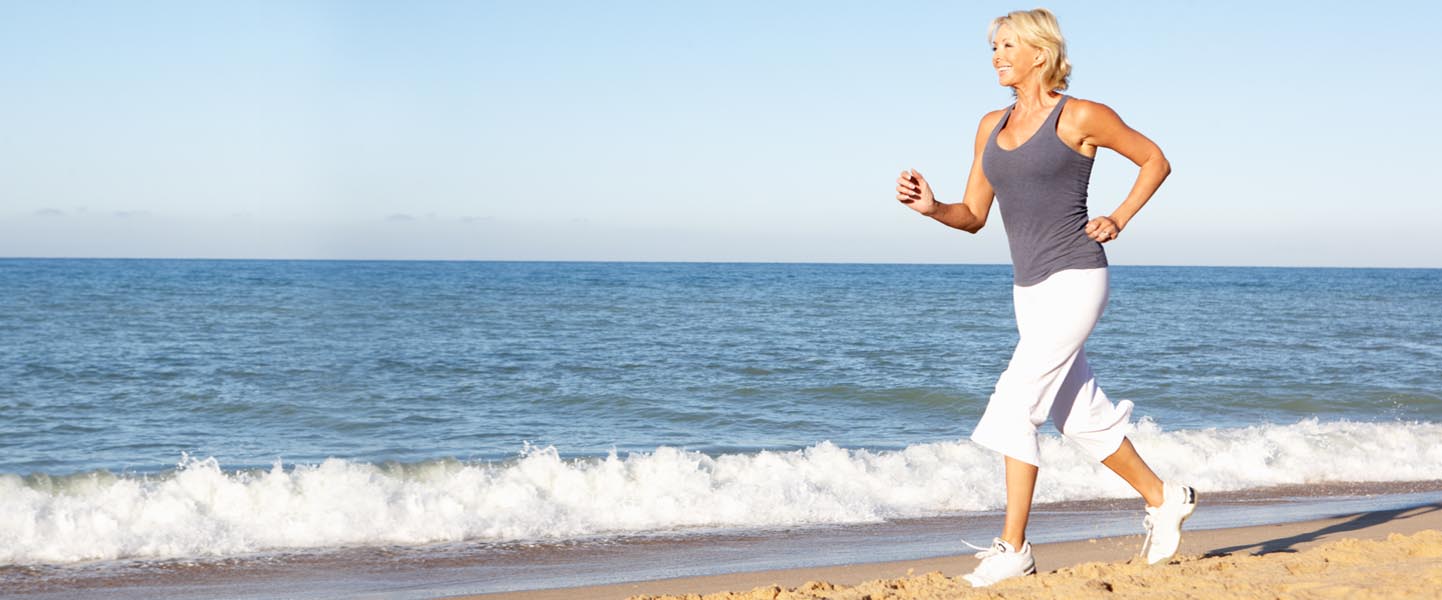Why let tiny veins have such a big impact on your confidence?

Spider veins are actually dilated superficial blood vessels that develop close to the surface of the skin. They may be harmless, but if spider veins make you want to cover up in embarrassment, it’s time to take control.
Northwest Vascular Consultants can help, with easy and effective treatments that will work wonders for your confidence.
We invite you to contact us today, and take the first step to looking and feeling better.
No one can say exactly why some people develop spider veins and others don’t, but doctors suspect these six common factors play a role:
Genetics
There seems to be a relationship between heredity and spider veins. If other family members have had spider veins, there’s a greater chance that you will too.
Hormones & Pregnancy
Female hormones tend to relax and weaken vein walls, allowing spider veins to develop. Birth control pills, pregnancy and menopause can all create hormonal fluxes.
Lack of movement
People who spend much of the day sitting or standing have a greater risk of spider veins. Not moving for long periods of time may force your veins to work harder to pump blood to your heart.
Obesity
A sedentary lifestyle, combined with an overweight body, can contribute to the development of spider veins.
Skin damage
Trauma to the surface of the skin, and exposure to the sun, can both play a part in developing spider veins.
Increasing age
Spider veins can occur at any age, but usually happen between 18-35, peaking between 50-60 when the elasticity of the vein walls may become weakened.
Spider veins aren’t harmful, and usually don’t have symptoms beyond their unpleasant web-like appearance. Some people may experience swelling, tiredness or heaviness in the legs, or a feeling of aching, burning or itching. Occasionally, spider veins can be a symptom of a more serious underlying vein disease.
Screening
During your first visit, you may be given an ultrasound scan to get a more detailed view of the damaged veins. This painless procedure reveals the diseased veins beneath the surface of the skin.
You’ll be asked questions about your symptoms, family history, and medical history. Your vascular surgeon will perform a physical exam, taking a closer look at the size, color and location of the spider veins.
Using this diagnostic information, we will customize a treatment plan for you, to ensure the best possible results.
Making lifestyle changes—such as exercising, losing weight and wearing support hose—can help improve spider veins for some people. But if you want them gone for good, Northwest Vascular Consultants offers two treatment options that deliver excellent results.
Both procedures are performed by experienced vascular surgeons, in the comfort and privacy of our Portland clinic. You’ll be treated and back at home the same day, with no need for hospitalization or a long recovery period.
Sclerotherapy
Sclerotherapy is the most common treatment for treating medium to large spider veins. It’s a very effective, simple, non-surgical approach. A tiny needle is used to inject an FDA-cleared solution directly into the spider vein. The solution irritates the lining of the vein, causing it to stick together and close. As the vein collapses, it’s absorbed into the body and is no longer visible on the surface of the skin.
Most of our patients see a dramatic improvement within a few weeks after their first treatment.
You may not be able to completely prevent spider veins, but there are steps you can take to lower your risk:
Relieve pressure
Reduce pressure on your legs by staying at a healthy weight and avoiding standing or sitting for long periods of time. Get up and move every 30 minutes or so to keep the blood moving.
Get support
If you’re on your feet a lot, consider wearing a lightweight compression stockings, which can help prevent and manage swelling and other spider vein symptoms.
Elevate your legs
Whenever possible, put your feet up to rest—keeping them positioned higher than your heart for the most benefit.
Use sunscreen
If you have light skin, sun exposure can lead to spider veins on your cheeks or nose, so wear sunscreen to minimize the damage.
Treat varicose veins
Having your varicose veins treated can reduce the pressure in the legs and prevent the development of additional spider veins.
Overview
Spider veins are actually dilated superficial blood vessels that develop close to the surface of the skin. They may be harmless, but if spider veins make you want to cover up in embarrassment, it’s time to take control.
Northwest Vascular Consultants can help, with easy and effective treatments that will work wonders for your confidence.
We invite you to contact us today, and take the first step to looking and feeling better.
Causes
No one can say exactly why some people develop spider veins and others don’t, but doctors suspect these six common factors play a role:
Genetics
There seems to be a relationship between heredity and spider veins. If other family members have had spider veins, there’s a greater chance that you will too.
Hormones & Pregnancy
Female hormones tend to relax and weaken vein walls, allowing spider veins to develop. Birth control pills, pregnancy and menopause can all create hormonal fluxes.
Lack of movement
People who spend much of the day sitting or standing have a greater risk of spider veins. Not moving for long periods of time may force your veins to work harder to pump blood to your heart.
Obesity
A sedentary lifestyle, combined with an overweight body, can contribute to the development of spider veins.
Skin damage
Trauma to the surface of the skin, and exposure to the sun, can both play a part in developing spider veins.
Increasing age
Spider veins can occur at any age, but usually happen between 18-35, peaking between 50-60 when the elasticity of the vein walls may become weakened.
Symptoms
Spider veins aren’t harmful, and usually don’t have symptoms beyond their unpleasant web-like appearance. Some people may experience swelling, tiredness or heaviness in the legs, or a feeling of aching, burning or itching. Occasionally, spider veins can be a symptom of a more serious underlying vein disease.
Screening
During your first visit, you may be given an ultrasound scan to get a more detailed view of the damaged veins. This painless procedure reveals the diseased veins beneath the surface of the skin.
You’ll be asked questions about your symptoms, family history, and medical history. Your vascular surgeon will perform a physical exam, taking a closer look at the size, color and location of the spider veins.
Using this diagnostic information, we will customize a treatment plan for you, to ensure the best possible results.
Treatment
Making lifestyle changes—such as exercising, losing weight and wearing support hose—can help improve spider veins for some people. But if you want them gone for good, Northwest Vascular Consultants offers two treatment options that deliver excellent results.
Both procedures are performed by experienced vascular surgeons, in the comfort and privacy of our Portland clinic. You’ll be treated and back at home the same day, with no need for hospitalization or a long recovery period.
Sclerotherapy
Sclerotherapy is the most common treatment for treating medium to large spider veins. It’s a very effective, simple, non-surgical approach. A tiny needle is used to inject an FDA-cleared solution directly into the spider vein. The solution irritates the lining of the vein, causing it to stick together and close. As the vein collapses, it’s absorbed into the body and is no longer visible on the surface of the skin.
Most of our patients see a dramatic improvement within a few weeks after their first treatment.
Prevention
You may not be able to completely prevent spider veins, but there are steps you can take to lower your risk:
Relieve pressure
Reduce pressure on your legs by staying at a healthy weight and avoiding standing or sitting for long periods of time. Get up and move every 30 minutes or so to keep the blood moving.
Get support
If you’re on your feet a lot, consider wearing a lightweight compression stockings, which can help prevent and manage swelling and other spider vein symptoms.
Elevate your legs
Whenever possible, put your feet up to rest—keeping them positioned higher than your heart for the most benefit.
Use sunscreen
If you have light skin, sun exposure can lead to spider veins on your cheeks or nose, so wear sunscreen to minimize the damage.
Treat varicose veins
Having your varicose veins treated can reduce the pressure in the legs and prevent the development of additional spider veins.
Consultation
Take the first step to looking and feeling better! Meet our doctors and talk about the procedures available to you.Patient Center
Complete your pre-visit forms, and learn more about insurance coverage and convenient payment options.FAQs
Have questions or concerns about your vein conditions? See the answers to our patients’ most common questions.



